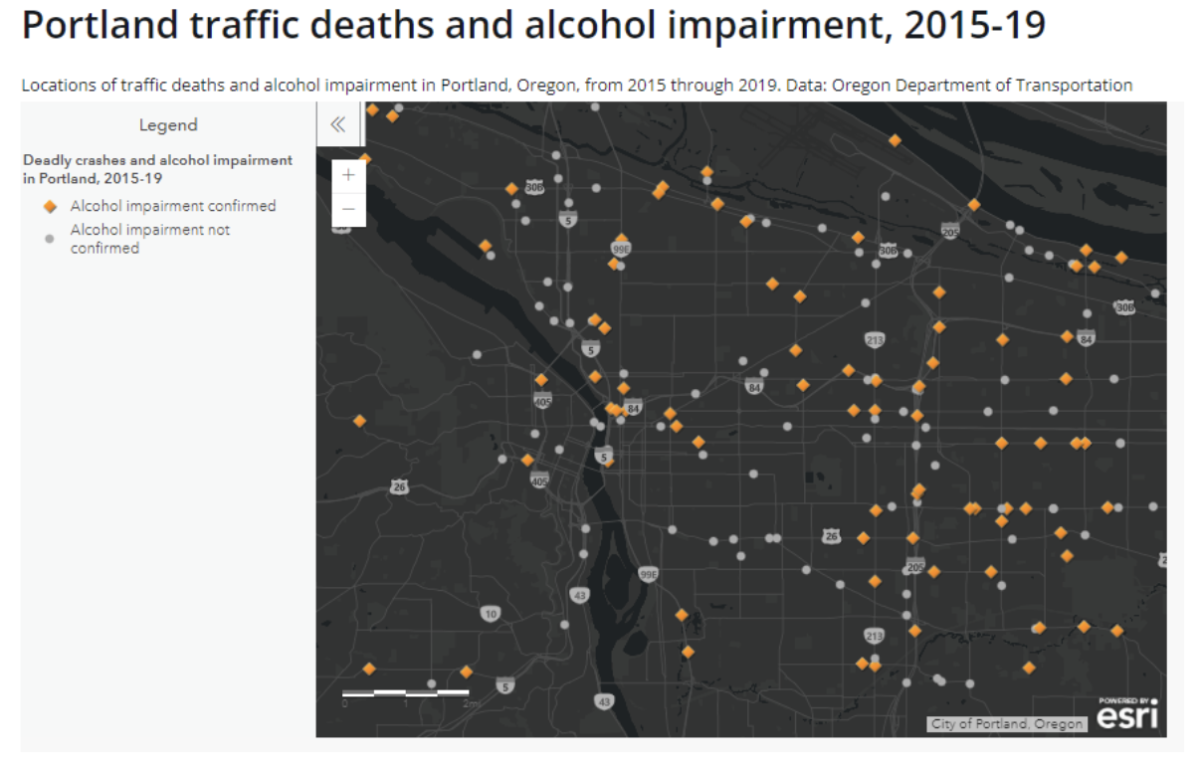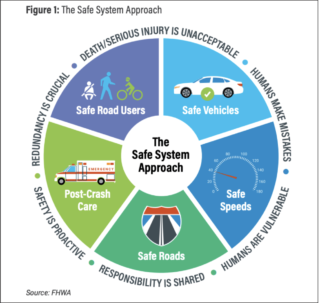
Everybody knows not to drink and drive. So why are we still seeing so many needless deaths from traffic crashes caused by people driving drunk?
As we’ve reported, traffic crash fatalities were very high in 2021, sharply increasing from the year before and leading our city far from its Vision Zero goal to eliminate traffic deaths. The Portland Bureau of Transportation released a statement Friday saying many of these deaths likely involved alcohol.
According to the Portland Police Bureau, at least 43 people in Portland died in 2020 and 2021 from crashes involving alcohol. Already this year, 34-year-old Salvador Manuel Rodriguez-Lopez was killed in a head-on collision with someone who was allegedly driving drunk on I-5 in Portland.
It’s not just Portland, either. Drunk driving fatalities appear to have gone up across the country since the pandemic.
Portlanders enjoy an abundance of craft breweries and wine tasting rooms, many of which have large parking lots – after all, it’s okay to have one drink and still drive, right? Well, no, not really.
“Even one drink can make it harder for people to visually track moving targets and to perform two tasks at the same time, both of which are important for driving. By the time a person hits Oregon’s legal blood alcohol content (BAC) limit they are three times more likely to crash compared to a sober person,” PBOT says.
In much of the United States, the BAC limit is 0.08 – a figure that’s hard to translate into number of drinks, because that can vary widely depending on factors like one’s size and liver condition. When Utah lowered its BAC limit to 0.05 in 2019, traffic deaths were reduced there. Oregonians voted against making our state the second in the nation to enact this lowered BAC limit, which advocates attributed to the powerful influence of the liquor industry.
But Vision Zero activists ask if more intense legal scrutiny is really the best practice here.
Advertisement
PBOT says they follow a “Safe System” approach, which they define as, “designing streets to protect people even when they make mistakes.”

A “Safe System” approach to drunk driving crashes would take car and road engineering and design into consideration with as much weight as legal BAC restrictions and what punishments people who break the law should have to face.
On top of the American criminal justice’s system’s racial bias that enables cops to pull over and threaten people of color at disproportionate rates, focusing only on punishment puts all the individual responsibility on the person driving instead of acknowledging the structures at play here.
A Streetsblog article from December goes into detail about why an approach like this could be more racially equitable and actually save more lives:
Especially in the wake of the killings of Michael Brown and George Floyd by police officers, many proponents of Vision Zero have challenged U.S. transportation leaders to radically rethink the role of enforcement in their safety strategies, in recognition of the safety threat that cops themselves can pose to BIPOC road users. The specific vision for those reforms, though, varies from advocate to advocate, from the removal of armed police from all traffic stops, to the removal of armed police, to the removal of all human-based enforcement strategies in favor of automated cameras and “self-enforcing” road designs, and a universe of other possibilities in between.
Of course, there certainly needs to be personal responsibility when it comes to drinking and driving. In its blog post on the subject, PBOT suggests people take public transit, call a taxi or have a designated driver when drinking, and reminds us that it’s cheaper to pay for a parking ticket from leaving your car outside a bar than it is to get into a drunk driving crash.
But activists say we need to acknowledge our system is designed for this. We live in a culture dominated by both cars and booze, two things that go very poorly together. Without changing something at a bigger scale, telling people not to drink and drive can only go so far.

